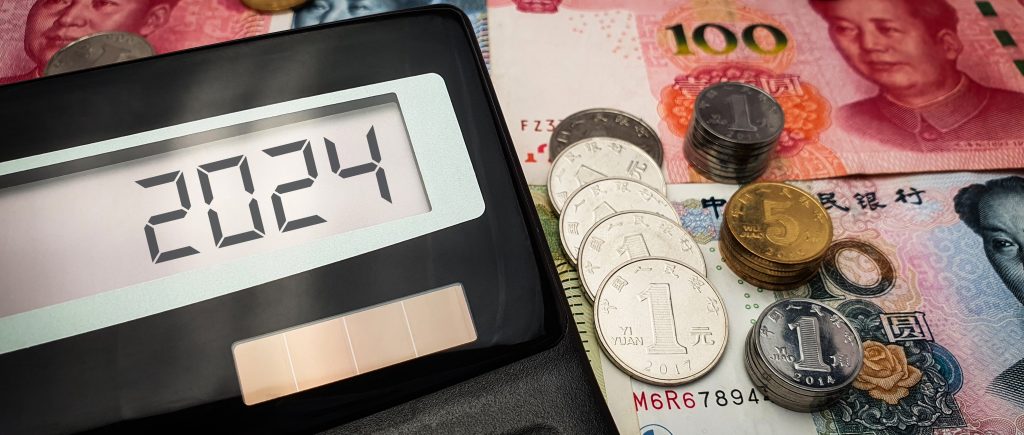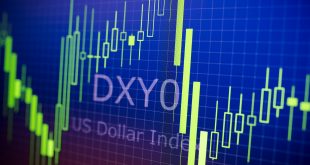China’s economic engine, which has long been the world’s growth driver, is losing steam. Recent data highlights a deepening slowdown with far-reaching global consequences. The Chinese economy is under increasing strain, with its weakest growth in five quarters. Efforts to bolster consumer spending have yielded disappointing results, and China’s GDP grew by only 4.7% in the second quarter, below economists’ expectations of 5.1%.
Monetary Policy Support, Potential Trump Influence
Retail sales rose at their slowest pace since December 2022, showing that a series of government efforts to boost confidence have done little to revitalize Chinese consumers. The government is expected to need to consider greater policy support to achieve its annual growth target of 5 percent, after… Disappointing second-quarter data, and the increasing possibility of former US President Donald Trump returning to the White House, also means that China will need additional political efforts to boost domestic demand in a timely manner, in light of the risks of declining external demand.
Multiple Challenges Ahead:
China’s economy is facing a multi-faceted crisis. Consumer spending is weakening, investment is drying up, and the real estate sector is in turmoil. These challenges have led to downward revisions in global oil demand forecasts. Japan, a major trading partner, is already feeling the impact, with business confidence and investor sentiment deteriorating. The broader implications for the global economy are significant.
A key factor contributing to China’s economic slowdown is the loss of its dynamic growth. The transition to a consumption-driven economy has been more difficult than anticipated, despite government efforts to stimulate demand. The housing market, a crucial engine of growth, continues to struggle, with falling prices and declining construction activity.

Iron Ore and Steel Prices Plummet to Lowest Levels Since 2022
Iron ore and steel prices have experienced a sharp decline, reaching their lowest levels since 2022. The primary reason for this downturn can be attributed to the economic slowdown in China, the world’s largest steel producer.
Reasons for the Decline:
China’s steel production has contracted significantly. Chinese data reveals a 9% decrease in steel production compared to the previous year.
Warnings of a Global Industrial Crisis:
China’s largest steel producer has issued a warning that the industrial crisis in China could spread to other countries, leading to a deeper slowdown in the sector. Meanwhile, global investors are closely monitoring economic developments in China, as any slowdown in the Chinese economy impacts the entire global economy. The steel market is currently experiencing a severe slowdown due to the economic crisis in China, which in turn is affecting global prices for steel and iron ore.
Slowdown in Fixed Asset Investment Fuel Concerns
The slowdown in fixed asset investment is particularly worrisome. Spending on infrastructure projects, a key driver of domestic demand, has slowed, raising concerns about the sustainability of economic growth. Private investment, a measure of business confidence and investor sentiment, has also weakened, reflecting growing uncertainty about economic prospects.
Fears of Deflation, Recession:
Recent developments have heightened fears of a global recession, especially with the U.S. economy slowing down. These developments have reignited concerns about a prolonged economic downturn, similar to Japan’s lost decade. The risk of deflation, a sustained decline in prices and wages, is increasing as consumer and business confidence erodes. To avoid this scenario, the Chinese government must take decisive measures to stimulate demand and restore confidence.
While the government has implemented some measures, such as lowering interest rates, their impact has been limited. More forceful policy intervention is needed, including increased government spending on infrastructure and social programs. However, challenges remain. The government’s ability to effectively direct funds towards productive investments is constrained by a lack of qualified projects. Furthermore, concerns about financial stability and the yuan exchange rate limit the scope of monetary easing.
The consequences of China’s economic slowdown appear to extend far beyond its borders. As the world’s largest importer of commodities, declining demand in China is affecting the prices of everything from oil and iron ore to agricultural products; this, in turn, is impacting the economies of commodity-exporting countries.
Furthermore, the slowdown in China is weakening global growth prospects. As a major market for goods and services produced by other countries, a weaker Chinese economy reduces export opportunities for many nations. This is particularly true for East Asian countries, which rely heavily on Chinese demand. The global financial system is also at risk from disruptions to the Chinese economy. A sharp decline in asset prices or a banking crisis could trigger a chain reaction that destabilizes global markets.
To mitigate risks, international cooperation is essential.
There are significant economic challenges facing China that pose major headwinds for the global economy. While the full extent of the impact is yet to be determined, it is clear that the world is facing a period of increased uncertainty. Policymakers in China and other countries must work together to navigate these turbulent waters and foster a sustainable global recovery.
To fully grasp the complexities surrounding China’s economic slowdown, more in-depth and detailed studies are imperative. Identifying specific sectors such as manufacturing, technology, and services that are driving this slowdown is crucial. Understanding the interplay between these sectors and their contributions to the Gross Domestic Product is equally important.
Geopolitical tensions, particularly the US-China relationship, cannot be overlooked. Trade disputes, technological competition, and political rhetoric, among many other factors, have far-reaching economic consequences. Assessing the impact of these factors on investment, consumer confidence, and supply chain disruptions is essential.
A comparative analysis with other major economies like the United States and the European Union can provide valuable insights. Identifying similarities and differences in economic challenges, policy responses, and growth trajectories can offer valuable lessons and potential solutions across the board. Finally, exploring alternative growth models for China is essential. A shift towards domestic consumption and innovation could be pivotal. Analyzing the feasibility, challenges, and potential benefits of such a shift is crucial for understanding China’s future economic trajectory.
 Noor Trends News, Technical Analysis, Educational Tools and Recommendations
Noor Trends News, Technical Analysis, Educational Tools and Recommendations





